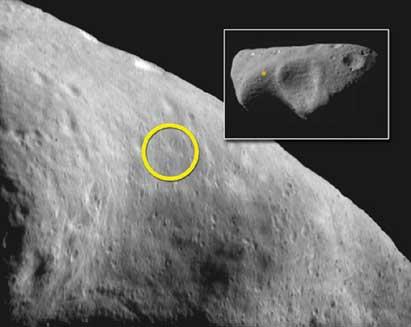First “asteroideration of history”
On Monday, the "asteroideration" of the NEAR probe will begin at four o'clock in the afternoon. The operations will last for four hours and, in case of success, the NEAR probe will be the first to stand on an asteroid for NASA pride. But it will not be an easy task, since the NEAR probe is not built to pose in the asteroid.

A year in orbit
It will soon be five years since the launch of the NEAR probe. It was launched on February 17, 1996 and its objective was to orbit one year the asteroid Eros. At the beginning of 1999 he was about to start working, but due to technical problems he did not start to turn around Eroski until February 2000. He has thus completed a year and, although with delay, has fulfilled perfectly the work assigned to him.
He has studied the mass, structure, geology, composition, gravity and magnetic field of the asteroid and collected 10 times more information than planned. He has also sent some 160,000 photographs in Eroski. With the appearance of potato, 33 km long and 13 km wide, the number of craters is high and it has been possible to verify that it is very old. The shape of the asteroid has been clearly defined. But, why are asteroids investigated?
Asteroids are not further investigated. Eros figures are believed to be born along with the solar system and are interesting because they can help answer questions about the creation of the solar system. The study of the composition of the asteroid allows to deepen the formation of the solar system and the Earth. For example, the elements are distributed differently in asteroids and on Earth. The powerful gravity of the Earth keeps the core warm and the elements, according to their density, are divided into layers. In asteroids, however, the density is uniform and all elements are mixed. The comparison of these characteristics allows to illustrate how the Earth was at its origin.
New questions New questions New questions
The more one learns, the more doubts arise, and when analyzing Eros something similar has happened. So much information has generated many new questions. The grooves on the surface, the large broken rocks, the stacked dust on some low slopes, etc., have caused the researchers numerous questions and headaches. Especially because the severity of the asteroid is believed to be too weak to accumulate dust. Their intention is to obtain more data on these special phenomena, so they decide to pose the probe in the asteroid. In this way, as you approach, you can make more measurements and photographs. The last one will be from a height of 500 meters and will have a resolution of 12 centimeters.
It will be seen on Monday that the NEAR probe can pose in the asteroid Eros, but the probe may be translated against the asteroid. This was not the initial purpose of the probe and is not prepared for it. Almost all you can do is drop it at a very low speed, from 3 to 8 km/h and see what happens.
Asteroids, space rocks
Asteroids are small bodies of the solar system, also called planetoids. They have rock shape and variable size. Ceres is the largest with 1,000 kilometers in diameter, but most of them have a few kilometers in diameter. Most orbit between Jupiter and Mars in the region known as asteroid belt. They are believed to be remnants of a planet that did not come into being due to the gravity of Jupiter. There are others who orbit the Sun out of this asteroid belt and some do it near the Earth (millions of kilometers). These form the group of Near Earth asteroids and Eros is one of them. In general, its orbit is stable and the risk of collision with Earth is minimal. At 316 million kilometers from Earth EROS, approximately 10 times the distance from Earth to the Moon, that is why it was chosen by NASA. Because it is close and sending a probe is not too expensive.
Published in the newspaper
Buletina
Bidali zure helbide elektronikoa eta jaso asteroko buletina zure sarrera-ontzian











